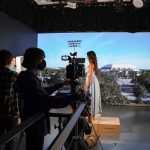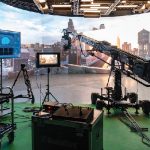In Life of Pi, one of the many recent movies to have released in cinemas across UAE, Codex technology occupied a key position in a 3D workflow. The film directed by 20th Century Fox and Academy Award-winning director Ang Lee used codex recorders on set to capture dual streams of data from pairs of Arri […]

In Life of Pi, one of the many recent movies to have released in cinemas across UAE, Codex technology occupied a key position in a 3D workflow.
The film directed by 20th Century Fox and Academy Award-winning director Ang Lee used codex recorders on set to capture dual streams of data from pairs of Arri Alexa cameras. Additionally, Codex digital laboratory systems were employed near-set to manage and back-up the enormous amount of data generated by the stereo production.
3D specialist Cameron Pace Group supported Lee through the creative process by providing the equipment and an on set workflow for screening dailies.
Among the various cameras that were initially selected, the team finalised on the Arri Alexa camera for its sensitivity to details such as light reflecting off water. In the movie, all the live action was shot natively in 3D.
The recorders recorded data without compression and with 100 percent reliability. Additionally, they greatly simplified the process of recording 3D through their unique ability to record dual streams from paired cameras in perfect synchronicity.
Codex treats dual streams as if they are one negative, explains Cameron Pace Group Co-Chairman and CEO Vince Pace.
That really benefits you when you want to playback scenes in 3D. It is far superior to using two recorders as that would require external equipment to play them in sync.
During the production, individual Codex recorders were used with each of three camera pairs. When the recorders were full, they were taken to a near-set laboratory and off-loaded to Codex Digital Labs. The Digital Labs were employed to make LTO back-up media and to load media onto a DVS Clipster system that was used to prepare 3D dailies media for review, editorial, visual effects and post production purposes.
The off-loading process was overseen by CPGs Derek Schweickart, the productions 3D Workflow Supervisor. Schweickart notes that Codexs system for managing 3D data also simplified his task. Codexs ability to record clips that are the same length is really important, he says. It made it very easy to manage the left eye and right eye. When I offloaded the data to the Digital Lab and then onto the Clipster, there was very little data management to do. I simply dropped in the left eye and right eye timelines. That allowed us to focus on other tasks such as color correction and matching the footage to script notes. That was a huge advantage.
Codex also allowed scene and take information entered on set to be used in the file naming for post. That meant that the footage didnt need to be logged in a traditional manner. Clips were the same length and properly named when delivered to the lab. That saved us time with syncing and naming, Schweickart concluded.















































































